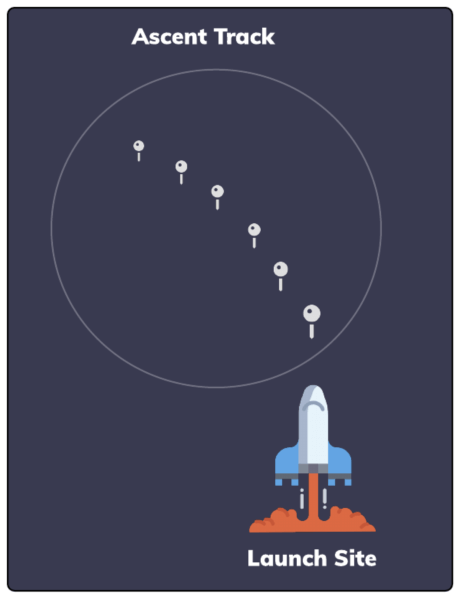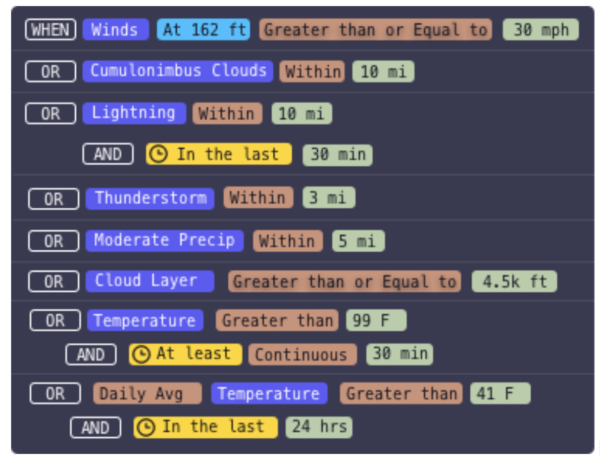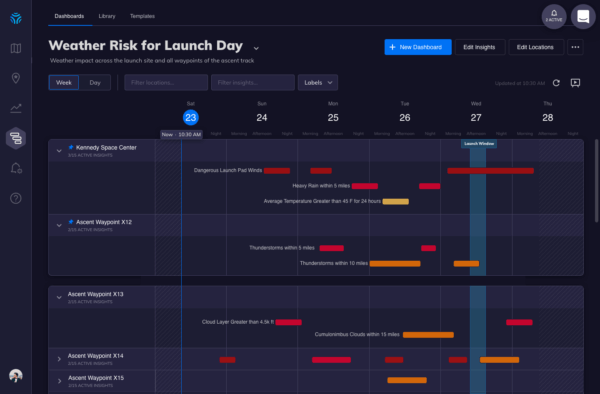Elon Musk will probably be up late tonight.
Just 16 minutes before the Falcon 9 rocket and Crew Dragon spacecraft was set to launch in Florida, the crew had to suspend the launch.
The cause? Bad weather.
On the #LaunchAmerica live feed, the SpaceX and NASA teams had to make the tough call of Go/No Go on the launch. But what was going on behind the scenes? What criteria were they considering to make that incredibly tough decision?
The answer, as you might expect, is complex.
Weather at Cape Canaveral
For any rocket launch, there are a number of weather criteria that must be met in order to launch successfully. According to NASA, the specific launch criteria for the Falcon 9 are:
- Sustained wind at the 162 feet level of the launch pad in excess of 35 mph
- Launch through a cloud layer greater than 4,500 feet thick that extends into freezing temperatures
- Launch within 19 kilometres of cumulus clouds with tops that extend into freezing temperatures
- Within 19 kilometres of the edge of a thunderstorm that is producing lightning within 30 minutes after the last lightning is observed
- Within 19 kilometres of an attached thunderstorm anvil cloud
- Within 9.3 kilometres of disturbed weather clouds that extend into freezing temperatures and contain moderate or greater precipitation
- Within 5.6 kilometres of a thunderstorm debris cloud
- Through cumulus clouds formed as the result of or directly attached to a smoke plume
But for yesterday, the likely cause of the delay was simple: lightning.
The risk: Lightning striking the rocket could lead to a massive explosion, much like the unmanned Atlas Centaur rocket in 1987.
The rockets themselves, because of their shape, can actually induce lightning strikes in sufficiently charged atmospheres. Measurements taken at the launch site yesterday suggested the risk for this type of lightning was too high.
How weather impacts space travel
While lightning caused the launch to be scrubbed yesterday, it’s not the only weather risk the SpaceX and NASA teams have to consider for a rocket launch. There is a weather risk to consider at each stage of the launch — from launch, to trajectory, to the final return to Earth.
The brilliant minds at SpaceX not only have to consider the weather conditions at the launch site, but also along the rocket’s trajectory path through the atmosphere and on the surface beneath it.
And even if the launch and all else goes well, there is another weather risk to consider when astronauts return to Earth. When the capsule lands in the ocean with the astronauts aboard, the capsule can be overturned by waves exceeding 4 meters in height.
All of these intersecting and interdependent calculations must be taken into account when planning for a massive launch like the SpaceX Falcon 9. It’s not a surprise that the weather could cause it all to grind to a halt with just 16 minutes of warning.
A better weather dashboard
While the Go/NoGo decision will always be made in the moment according to the conditions at the time, there is a massive amount of forecasting and planning going on behind the scenes. These efforts begin long before lift-off is scheduled, and continue to update on a minute-by-minute basis until the mission is completed.
It’s no doubt incredibly frustrating to build up to this massive launch, with a live feed, and tons of media coverage, only to have to postpone until the coming Saturday.
But imagine if Elon Musk had a dashboard that could take into account all of these detailed weather variables and help him understand and reduce the risks posed by weather?
If he had this information in advance, he could minimize the risks to the astronauts and the grounds crew — especially since fueling and then de-fueling the ship are extremely dangerous. It also would have saved SpaceX a tremendous amount of money wasted by scrubbing the launch.
What do we mean by a dashboard? By using the specific criteria for the launch, you can create a dashboard that shows exactly what you need to know in the moment. Here is the logic behind the Tomorrow.io dashboard, taking into account all of the parameters required for the launch of the Falcon 9.
Then, Elon could have this dashboard on-hand in the days leading up to the launch. Because he’s an insanely busy person, he doesn’t have the time to look at all the parameters individually and understand the risks of the cloud layer at 4000 feet. Instead of the raw data, he gets context.
The dashboard allows Elon to see at a glance: how’s the weather for our launch date?
The SpaceX team could have this dashboard on a display in the operations center and quickly see: OK, there’s no red or orange, we’re all green. The signs are good. But if some red starts to pop up, it’s time to have one of our team dive into the details and take a closer look at that forecast.
If Elon were to read this and be interested in using the product, he’d be getting the answer to his question quickly, at a high level to make the necessary operational decision, and be able to disseminate it easily to his team.
Learn more about Tomorrow.io’s Insights Dashboard.






